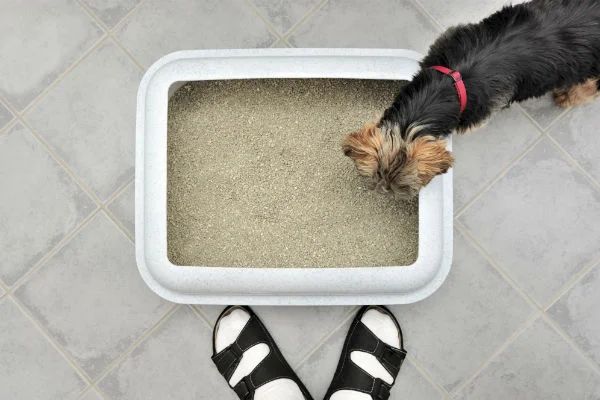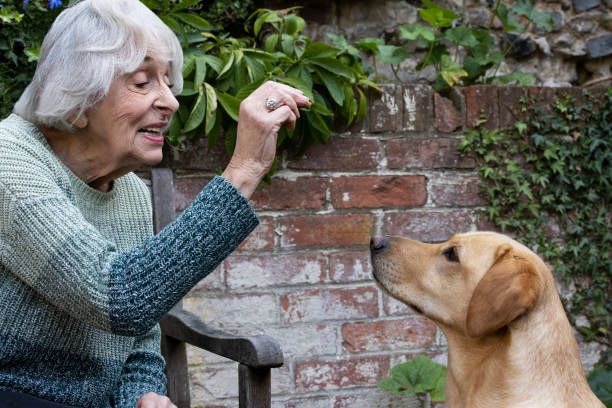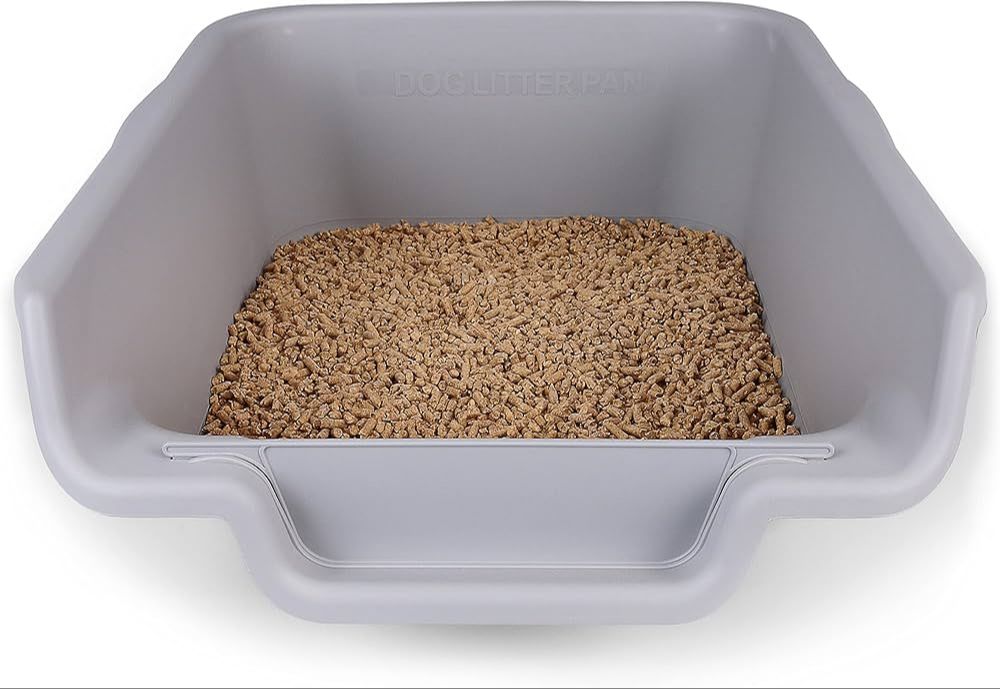Introduction
As dogs get older, their mobility can decrease, making it more difficult for them to get outside to go potty. This is where litter box training can be beneficial for senior dogs. Teaching an older dog to use a litter box allows them to relieve themselves without having to navigate stairs or walk far distances. It also provides an indoor potty option for those times when no one is home to let the dog out or for when the weather is bad.
Litter box training is possible with most dogs, but it does require time and patience. The good news is that older dogs’ lifelong housetraining gives them an advantage with litter box training. Their inclination to keep their space clean and go potty in designated areas makes it easier to transition them to a litter box. With a positive, consistent training approach, senior dogs can successfully learn this new skill.
Benefits
Litter box training can provide a number of benefits for older dogs, especially smaller breeds or dogs with mobility issues who cannot get outside as frequently. The main advantage is convenience. Rather than having to be taken outside multiple times per day, sometimes in bad weather, an older dog can simply use a litter box indoors whenever they need to go (1). This can be a lot easier on both the dog and the owner.

Litter box training means no more accidents in the house while waiting to be let out or overnight. Dogs with incontinence issues or loss of bowel/bladder control can easily get to the litter box on their own without trouble. The litter box can be placed in an easily accessible area on the same floor as where the dog spends most of their time. Overall, it provides an indoor toilet option that preserves a senior dog’s dignity and simplifies house training (2).
Sources:
(1) https://www.vetinfo.com/adult-dog-litter-training.html
(2) https://www.akc.org/expert-advice/health/senior-dogs-might-benefit-indoor-potty-training/
Challenges
One of the biggest challenges with litter box training an older dog is that it can be more difficult to train older dogs who are set in their ways. Senior dogs often have established routines and habits, so teaching them to start going potty in a new location requires breaking those habits. Older dogs may be less motivated to learn new tricks as well. Their senses and cognitive abilities are declining, which can make it harder for them to pick up on the cues and positive reinforcement involved in training. Some older dogs can be quite stubborn about changing their potty behaviors.
According to Hill’s Pet Nutrition, older dogs often lose control of their bladder and bowel movements as they age, which is another challenge. They may not be able to hold it as long as they used to. Trying to rush an older dog to a litter box when their need to go is more urgent can be difficult.
Overall, the rigidity and potential physical limitations of senior dogs means litter box training requires more patience and persistence. But it can be done with consistency, positive reinforcement and consideration of their needs.

Supplies Needed
There are a few key supplies needed to successfully litter box train an older dog. The most obvious is purchasing a litter box designed for dogs. These often have lower sides and larger trays compared to traditional cat litter boxes. Popular options can be found at retailers like Dog Litter Box Training – Walmart and Dog Litter Box – Amazon. It’s recommended to get a box that is 1.5-2 times the length of your dog to provide enough space.
You’ll also need an absorbent litter material specifically made for dogs. Avoid using traditional clay cat litter, as this can be dusty and unappealing to dogs. Instead, look for grass seed litters, cedar pellets, or absorbent pad inserts. Treats can also be a useful supply for positive reinforcement during the training process. Using small treats to reward your dog for using the litter box will help reinforce the desired behavior.
Training Tips
When litter box training an older dog, it’s important to go slow and be patient. Older dogs can be less adaptable and take longer to learn new routines. Set your dog up for success by moving in small steps and not progressing too quickly.
Use treats and positive reinforcement when your dog goes in the right spot. Praise or give treats immediately after they use the litter box to help reinforce the behavior. You can phase out treats over time once it becomes a set routine.

Don’t punish your dog for accidents, as this can inhibit the training process. Simply clean up thoroughly with an enzymatic cleaner to remove odors. Supervise closely and gently guide or lead your dog to the litter box area if you notice signs they need to go.
Keep training sessions brief, as older dogs have shorter attention spans. Take breaks or stop for the day if your dog seems frustrated. Stay calm, patient and consistent.
Training takes diligence, but the investment of time will be worth it. With an approach tailored for your senior dog’s needs, litter box training can be achieved successfully.
Housetraining Refresher
It’s important to review the basics of housetraining when re-training an adult dog. This will help set your dog up for success. Here are some key tips (cite https://www.paws.org/resources/re-housetraining-your-adult-dog/):
- Take your dog outside frequently, at least every 1-2 hours as well as first thing in the morning, after meals, after playtime, and before bedtime.
- Praise and reward your dog immediately after they eliminate outdoors. This will reinforce the desired behavior.
- Thoroughly clean any indoor accidents with an enzymatic cleaner to remove odors that may attract the dog back.
- Supervise closely or crate your dog when you can’t directly monitor them. This will help prevent accidents.
- Be patient and consistent. Re-training takes time but following these basic principles will get your dog back on track.
Revisiting the fundamentals of housetraining is key when working with an adult dog. With persistence and positive reinforcement, you can help them learn to successfully use the litter box.
Troubleshooting
If your older dog is having accidents or resisting litter box training, there are a few things you can try to get back on track.
If accidents happen, thoroughly clean the area with enzymatic cleaner to remove any odor that may continue attracting your dog to that spot (AKC). Restrict access if needed until housetraining improves.
If your dog refuses to use the litter box, go back to basics with rewards for any step in the right direction, like just looking at or approaching the box. Be patient and consistent to re-establish the habit over time. Consider adjusting elements like litter type, box location, or schedule based on your dog’s preferences. Ask your veterinarian to rule out medical issues. With persistence and positive reinforcement, an older dog can learn

new tricks.
Maintenance
Keeping the litter box clean is crucial when training an older dog to use it. The box should be scooped at least once a day according to The ASPCA. Remove all urine, feces, and any litter that is wet or clumped.
The litter itself needs to be dumped and replaced every 2-3 weeks per The Humane Society. Empty the litter box completely and wash with mild soap and water. Allow to dry fully before refilling with fresh litter. Replace the litter more frequently if odor is an issue.
It’s recommended to have at least 1 litter box per household cat according to the American Veterinary Medical Association. The same guideline applies when dogs share the litter box. Providing enough boxes prevents issues with a dog guarding the litter box from the cat.
To keep the litter box clean and hygienic for your pets, be sure to follow this maintenance schedule. Frequent scooping and regular litter changes make the box more appealing for an older dog to use.
Health Considerations
As dogs age, they may develop health issues like arthritis that can make moving around difficult or painful. This is an important consideration when litter box training an older dog. According to the AKC, arthritis can make it challenging for a dog to get up and down or climb stairs to go outside to relieve themselves [1]. Having a litter box on the same floor as their main living space provides an accessible option.
Issues like urinary incontinence are also common in senior dogs. A litter box with absorbent litter can help contain accidents and limit messes in the home for an incontinent dog. Check with your vet to rule out underlying medical causes if your older dog is having frequent accidents. They may recommend medications or supplements to help with bladder control.
Overall, a litter box can provide senior dogs with a convenient and comfortable potty area as their mobility decreases. But it’s still important to allow ample outdoor time if possible for overall health. Work closely with your vet to ensure any age-related conditions are properly managed.
Conclusion
In summary, litter box training an older dog is definitely possible with patience and persistence. The keys are to start with a thorough housetraining refresher, set up an enticing and accessible litter box area, stick to a regular feeding and potty schedule, use positive reinforcement and treats to reward successes, confine the dog initially, and be vigilant about monitoring and preventing accidents. Troubleshooting common issues like health problems, anxiety, incorrect litter, or poor box placement is also important. With time and consistency, even senior dogs can learn good litter box habits. Just remember that accidents will happen, so remain calm and keep a good supply of enzyme cleaner on hand. The benefits of litter training typically outweigh the challenges for both dogs and owners.
